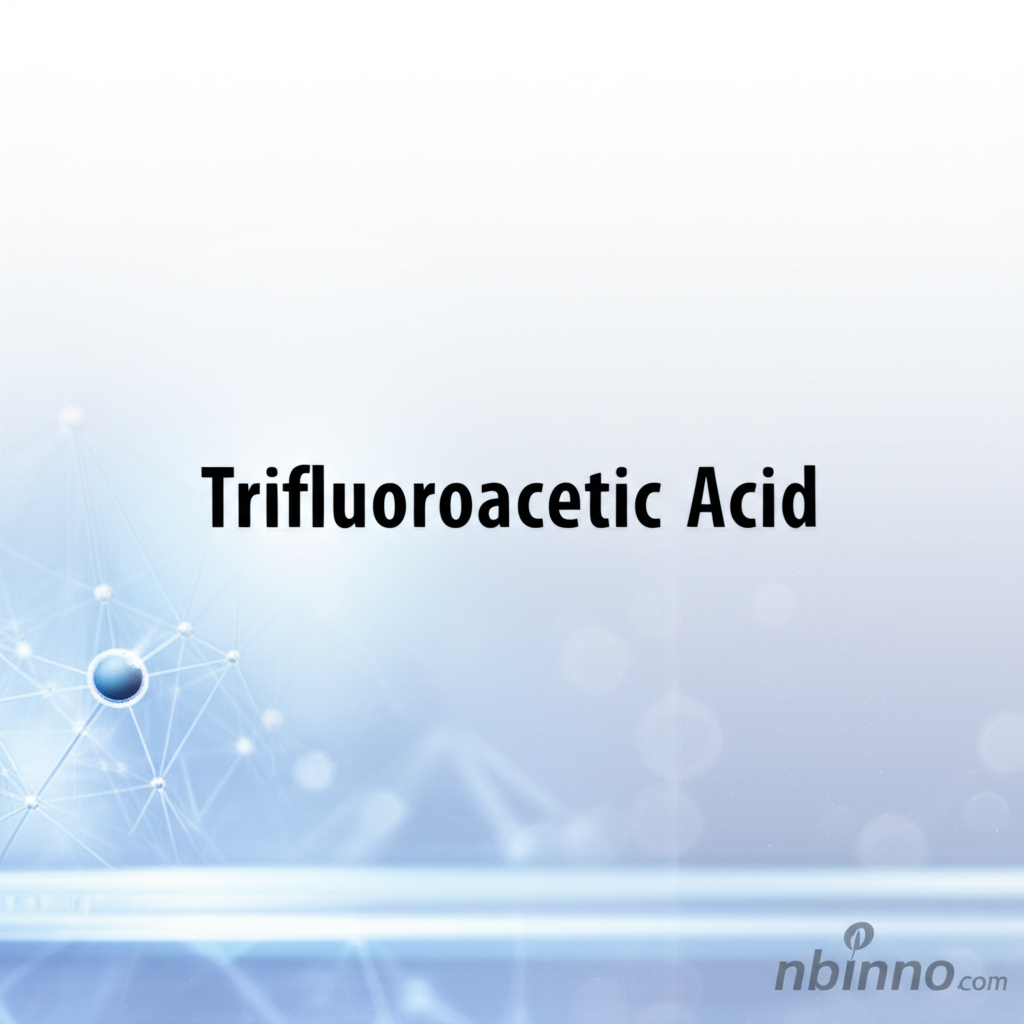Trifluoroacetic Acid (TFA): Properties, Applications, and Industrial Significance
Explore the key attributes and widespread uses of this vital organofluorine compound.
Get a Quote & SampleProduct Core Value

Trifluoroacetic Acid
Trifluoroacetic Acid (TFA) is a potent organofluorine compound characterized by its strong acidity and unique trifluoromethyl group. Its chemical stability, high solubility in both water and organic solvents, and its ability to act as both a solvent and a catalyst make it indispensable in numerous chemical processes.
- The exceptional acidity of TFA, significantly higher than acetic acid, makes it a preferred choice for facilitating a wide range of organic reactions, including rearrangements and deprotection steps.
- Its utility extends to pharmaceuticals and pesticide intermediates, where it plays a crucial role in complex organic synthesis pathways, contributing to the development of advanced chemical compounds.
- In analytical chemistry, TFA serves as a vital ion-pairing agent in techniques like HPLC, enabling the precise separation and analysis of organic molecules, particularly peptides and proteins.
- The compound's strong solvation capabilities and its role in stabilizing reactive intermediates highlight its importance for researchers aiming to optimize chemical reactions and achieve higher yields.
Key Advantages
Enhanced Reaction Efficiency
Leverage the potent acidity of Trifluoroacetic Acid to significantly boost reaction rates and improve yields in demanding organic synthesis processes, a key factor for efficient chemical production.
Versatile Application Spectrum
From pharmaceutical manufacturing to agrochemical development, TFA's broad applicability as a solvent, reagent, and intermediate makes it a cornerstone chemical for diverse industrial needs.
Precision in Analysis
Utilize TFA's unique properties as an ion-pairing agent in chromatography to achieve superior separation and detection of complex biomolecules, crucial for quality control in research and industry.
Key Applications
Pharmaceutical Synthesis
Trifluoroacetic Acid is extensively used as a reagent and solvent in the synthesis of active pharmaceutical ingredients (APIs) and intermediates, aiding in peptide synthesis and the creation of fluorinated drugs.
Pesticide Intermediates
Its role as a chemical intermediate is vital in the agrochemical sector, contributing to the development of effective pesticides and herbicides through intricate organic synthesis.
Organic Synthesis Reagent
As a powerful solvent and catalyst, TFA facilitates a wide array of organic reactions, including rearrangements, deprotections, and trifluoromethylation, essential for advancing chemical research.
Analytical Chemistry
In analytical techniques such as High-Performance Liquid Chromatography (HPLC), TFA is employed as an ion-pairing agent to enhance the separation and detection of complex organic compounds.
